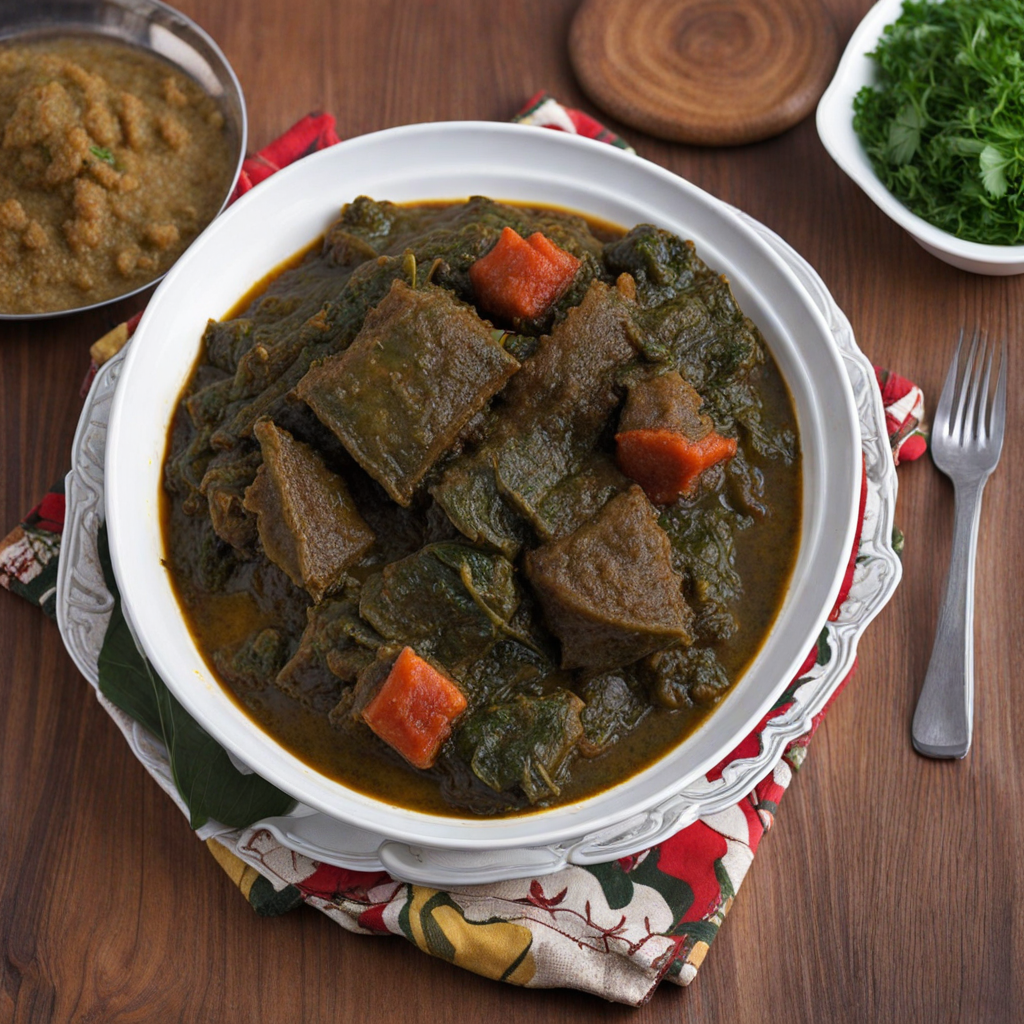Beignets
Beignets from Gabon are delightful deep-fried pastries that encapsulate the essence of West African street food. These golden, fluffy treats are often made with a simple dough that combines flour, sugar, and a hint of yeast, which gives them a light and airy texture. The dough is typically flavored with ingredients like vanilla or coconut, contributing to a subtly sweet and aromatic profile that makes each bite a little piece of heaven. They are usually served warm, straight from the fryer, with a dusting of powdered sugar on top, adding an extra layer of sweetness that complements the dough's flavor perfectly. These pastries are versatile and can be enjoyed at any time of day, whether as a breakfast option or a sweet snack. In Gabon, beignets might be accompanied by a dipping sauce, such as chocolate or fruit preserves, enhancing their flavor and making them even more irresistible. The crispy exterior provides a satisfying contrast to the soft, pillowy inside, creating a delightful textural experience that is truly unique. The combination of flavors and textures makes Gabonese beignets a favorite among locals and visitors alike. What sets Gabonese beignets apart from similar pastries found in other regions is the cultural significance they hold. They are often sold by street vendors, making them a popular choice for those looking to grab a quick and delicious treat while exploring the vibrant streets of Gabon. These beignets are not just food; they represent a sense of community and shared experience, often enjoyed during gatherings and special occasions. With every bite, one can savor the warmth of Gabonese hospitality and the rich culinary traditions that continue to thrive in this beautiful country.
How It Became This Dish
Beignets: A Culinary Journey from Gabon Gabon, a lush and diverse country located on the west coast of Central Africa, offers a rich tapestry of culinary traditions that reflect its unique history, culture, and geography. Among the myriad of dishes that represent Gabonese cuisine, beignets hold a special place. These delicious fried pastries, often sweetened and enjoyed as snacks or desserts, have a fascinating story that intertwines with the country’s culture, colonial past, and modern-day culinary developments. Origins of Beignets in Gabon The term "beignet" translates from French as "fritter" or "doughnut." While the concept of frying dough can be traced back to ancient civilizations across the world, the specific form of beignet found in Gabon is rooted in both indigenous practices and French colonial influence. Historically, the indigenous peoples of Gabon prepared various forms of fried snacks using local ingredients, including cassava, yams, and maize. These early iterations of beignets were often savory, utilizing locally sourced spices and herbs. The arrival of the French in the 15th century marked a significant turning point in Gabon’s culinary landscape. The French brought their own culinary traditions, including the sweet and airy beignets that we recognize today. By the 19th century, Gabon was firmly established as a French colony, and the fusion of French and indigenous culinary styles began to take shape. The sweetness of French-style beignets found a home in Gabonese culture, leading to the development of various recipes that incorporated traditional Gabonese ingredients. Cultural Significance Beignets are more than just a delicious treat in Gabon; they are a symbol of community, celebration, and hospitality. In Gabonese culture, food plays a vital role in social interactions and gatherings. Beignets are often served during festivities, family reunions, and celebrations, where their presence signifies abundance and joy. In urban areas, you will find beignet vendors on bustling street corners, where locals gather to enjoy the warm, fluffy pastries. These vendors often fry them fresh to order, and their beignets are typically enjoyed with a cup of coffee or tea, making them a common snack for both children and adults. The act of sharing beignets has become a communal experience, encouraging social interaction and the strengthening of bonds within neighborhoods. Moreover, beignets are often featured in traditional ceremonies and religious celebrations. For instance, during the celebrations of the New Year or other significant cultural events, families prepare large trays of beignets to share with friends and relatives. This communal aspect of beignets underscores their importance in Gabonese culture as a vehicle for connection and togetherness. Development Over Time The evolution of beignets in Gabon reflects broader social, economic, and culinary changes within the country. As Gabon moved through the 20th century, transitioning from a French colony to an independent nation in 1960, the culinary landscape continued to adapt. In the post-colonial era, there was a resurgence of interest in traditional Gabonese cuisine, and beignets began to take on various forms and flavors. While the classic sweet beignet remained popular, local chefs and home cooks experimented with different ingredients and fillings. Today, you can find beignets made with cassava flour, cornmeal, or even sweet potatoes, highlighting the versatility of this beloved dish. Additionally, contemporary Gabonese cuisine has seen the integration of international influences. Globalization has introduced new flavors, techniques, and ideas into the kitchen, resulting in creative interpretations of beignets. For example, you may find beignets filled with chocolate, fruit preserves, or even savory fillings like spiced meats, reflecting a blend of traditional and modern culinary practices. The rise of Gabonese cuisine on the international stage has also contributed to the popularity of beignets. Chefs and food enthusiasts are increasingly interested in exploring African cuisines, and Gabonese beignets have garnered attention for their unique flavors and textures. Food festivals and culinary events celebrate Gabonese cuisine, allowing beignets to shine as a representative dish that encapsulates the country’s rich cultural heritage. Conclusion Beignets in Gabon are more than just a delicious snack; they embody the country’s history, culture, and communal spirit. From their origins in indigenous practices and French colonial influence to their modern-day adaptations, beignets have evolved into a beloved staple of Gabonese cuisine. They symbolize connection, celebration, and the rich tapestry of flavors that make up Gabon’s culinary identity. As Gabon continues to navigate the complexities of globalization and cultural exchange, beignets remain a vibrant part of the nation’s food landscape. They serve as a reminder of the enduring power of food to bring people together, bridging gaps between tradition and innovation, and ensuring that the story of Gabonese cuisine continues to be told—one beignet at a time.
You may like
Discover local flavors from Gabon







